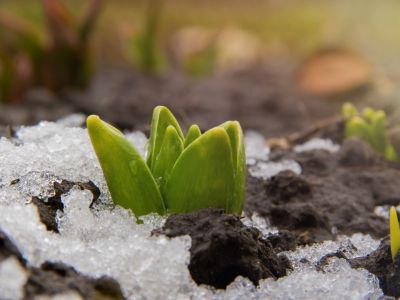Plant Dormancy in Winter
Fall is the time most gardeners plant spring bulbs. Bulbs produce some roots until the real cold sets in. The flower bulb life cycle includes the bloom period, foliar energy gathering, root and offset formation, and finally, they get a much needed cold exposure. Bulbs in winter need the cold exposure to eventually break dormancy bonds and force spring growth. That is why spring bulbs that are “forced” are refrigerated to provide chilling hours necessary for flower development.
About Dormant Flower Bulbs
Plant dormancy in winter differs from variety to variety. In bulbs, it is primarily a time of rest, but a few things are happening underground. After blooming, it is recommended to leave the foliage on the plant and only cut spent blooms. Let it die back naturally. While foliage remains available, the plant is gathering energy from photosynthesis that will turn to plant sugars, fueling the next season’s growth and flowering. Bulbs left in the ground spend autumn forming daughter, or offset bulbs, and roots. In winter, the foliage dies back and the most important part of the flower bulb life cycle begins.
Bulb Plants Dormancy Process
Under snow and ice, an important chemical reaction is taking place. Some roots will continue to form and dive deeply. The shorter day hours trigger dormancy, which will see the bulbs experiencing a chilling period. Every bulb has a different day length trigger and a different chilling period. The cold temperatures cause the bulb to break glucose into smaller molecules which lowers the freeze temperature to prevent damage to the bulb. Additionally, small leaf structures and the beginning cells for flower production begin to form.
Protecting Bulbs in Winter
While the bulbs naturally protect themselves from winter’s chill, the gardener can help. Plant bulbs at the proper depth, never near the surface of the soil. Mulch around the spent plants to keep the soil warmer and gradually add in nutrients as the mulch composts. Pull the mulch away from the bulb zone when you see the first bits of green. Once the bulb has reached its optimal number of chilling hours and the soil warms a bit, the structure will start to send out shoots and soon, flowers.
